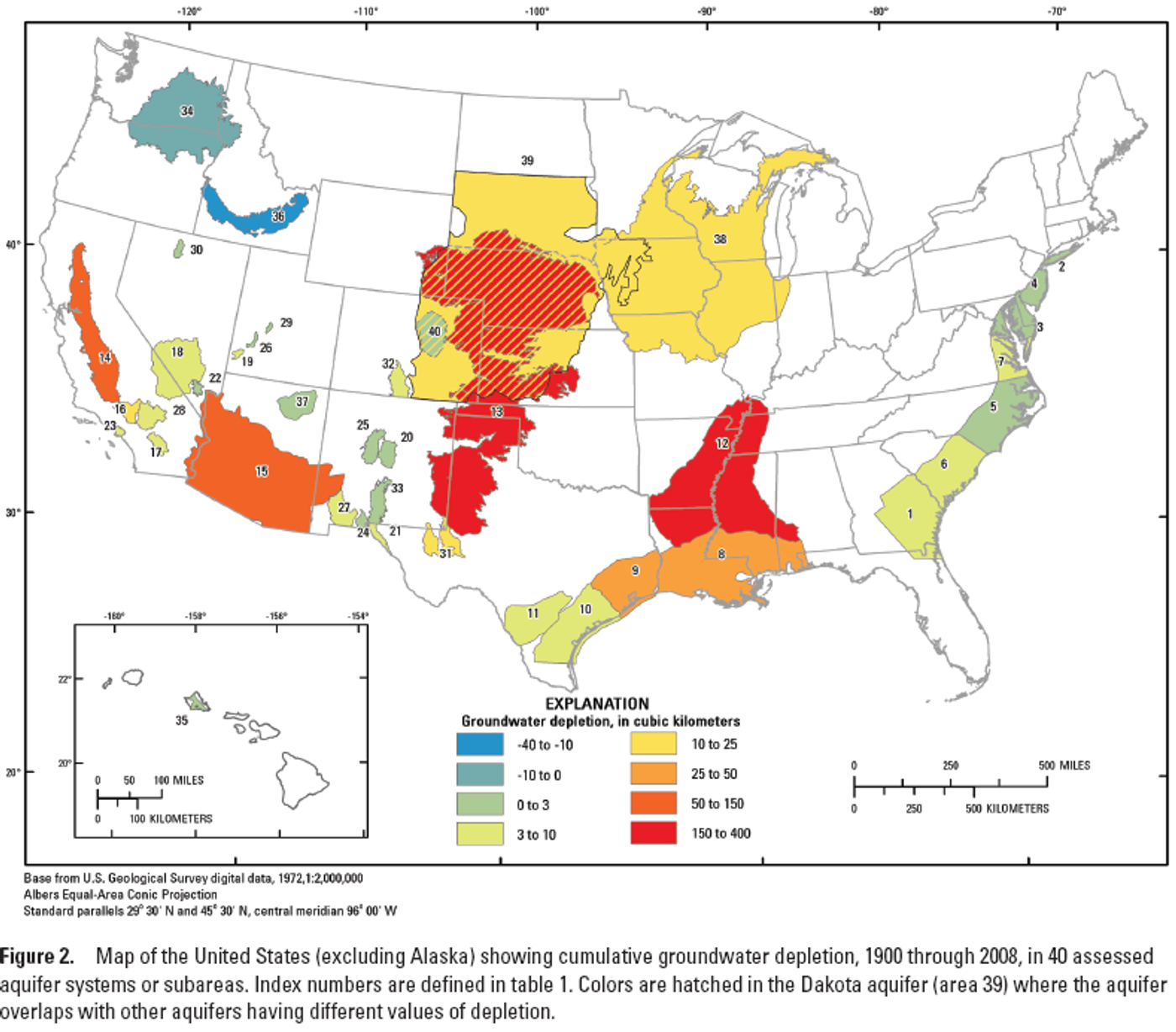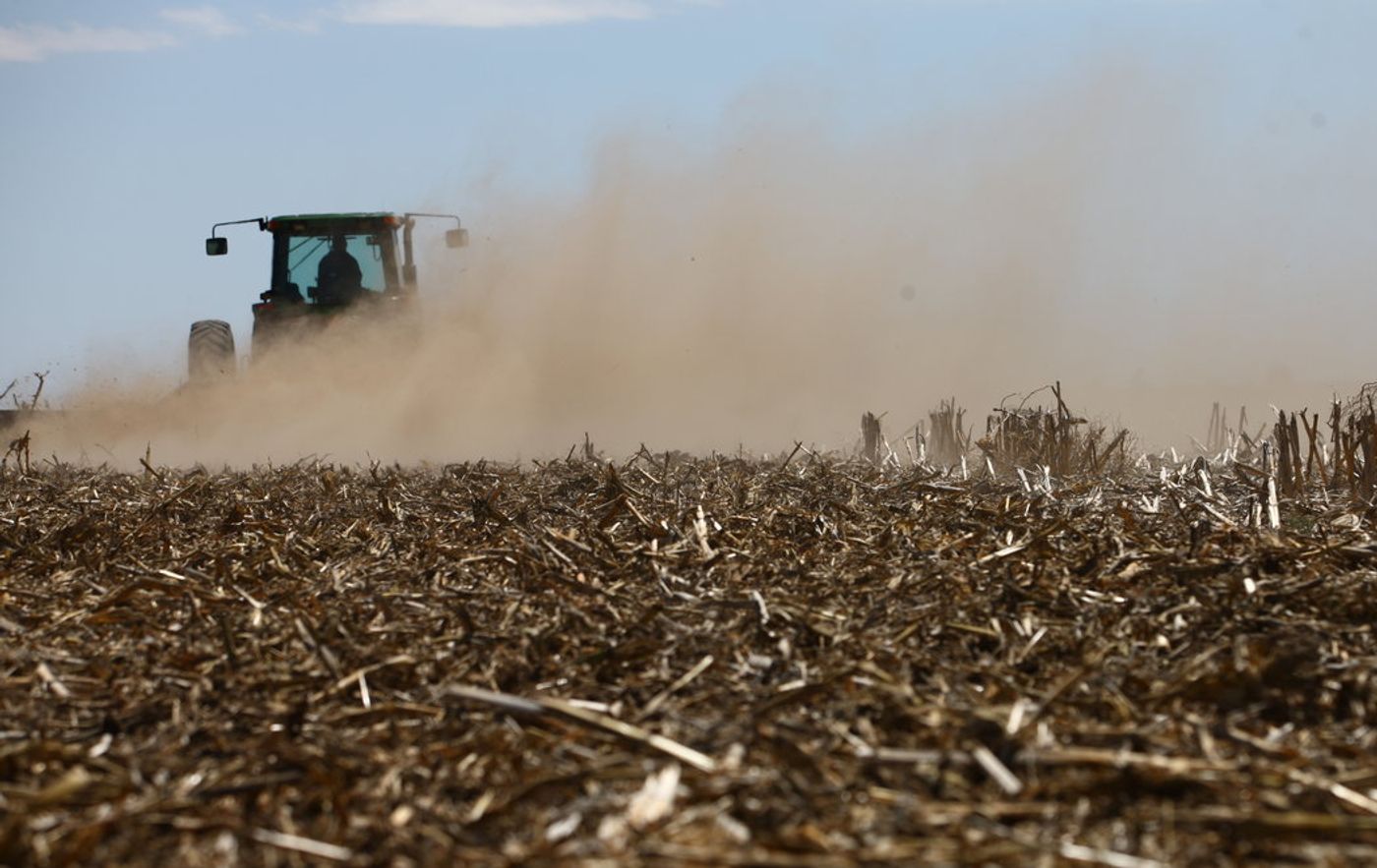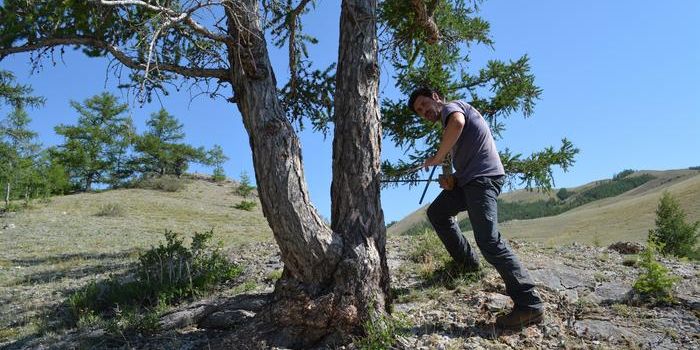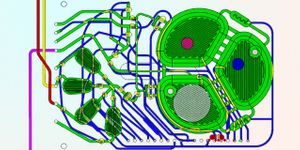The Dirty Thirties dust bowl that affected most of the Midwest due to the widespread erosion from the plowing era is threatening to return. However this time the culprit is not the plow, but rather the pump.
The High Plains Aquifer, a waterlogged jumble of sand, clay and gravel that begins beneath Wyoming and South Dakota and stretches through eight states to the Texas Panhandle, stores as much water volume as Lake Huron. That’s 2.9 billion acre-feet, a number so large that it once seemed inexhaustible. The High Plains Aquifer, also known as the Ogallala, provides 30% of all of the water used to irrigate U.S. agriculture. However, due to the greediness of irrigation (particularly center pivot irrigation), thirsty crops, and years of drought, the Ogallala is declining drastically and threatening farmers’ livelihoods, and therefore the nation’s food production.

A story from the NY Times writes about one family’s view of the problem: “Forty-nine years ago, Ashley Yost’s grandfather sank a well deep into a half-mile square of rich Kansas farmland. He struck an artery of water so prodigious that he could pump 1,600 gallons to the surface every minute. Last year, Mr. Yost was coaxing just 300 gallons from the earth, and pumping up sand in order to do it. By harvest time, the grit had robbed him of $20,000 worth of pumps and any hope of returning to the bumper harvests of years past. ‘That’s prime land,’ he said not long ago, gesturing from his pickup at the stubby remains of last year’s crop. ‘I’ve raised 294 bushels of corn an acre there before, with water and the Lord’s help.’ Now, he said, ‘it’s over.’”
See, the thing about groundwater that is different than surface what is that when it’s gone, it’s gone. It takes thousands of years for aquifers to form, and the constant pumping of the precious resource is happening too quickly to allow it to replenish itself.
According to the USGS, “In the United States, groundwater is the source of drinking water for about half the total population and nearly all of the rural population, and it provides over 50 billion gallons per day for agricultural needs. The water stored in the ground can be compared to money kept in a bank account. If you withdraw money at a faster rate than you deposit new money you will eventually start having account-supply problems.”
The negative effects of groundwater depletion are grave. To list several: the drying up of wells, reduction of water in streams and lakes, deterioration of water quality, increased pumping costs, land subsidence. And although it may seem as though this is a farmer’s problem that coastal residents don’t need to concern themselves over, the fact is that it’s all so closely tied in to economics that everyone is playing a part in the demand-supply cycle that started us here to begin with.
Sources:
National Geographic,
Scientific American,
USGS,
NY Times





















































